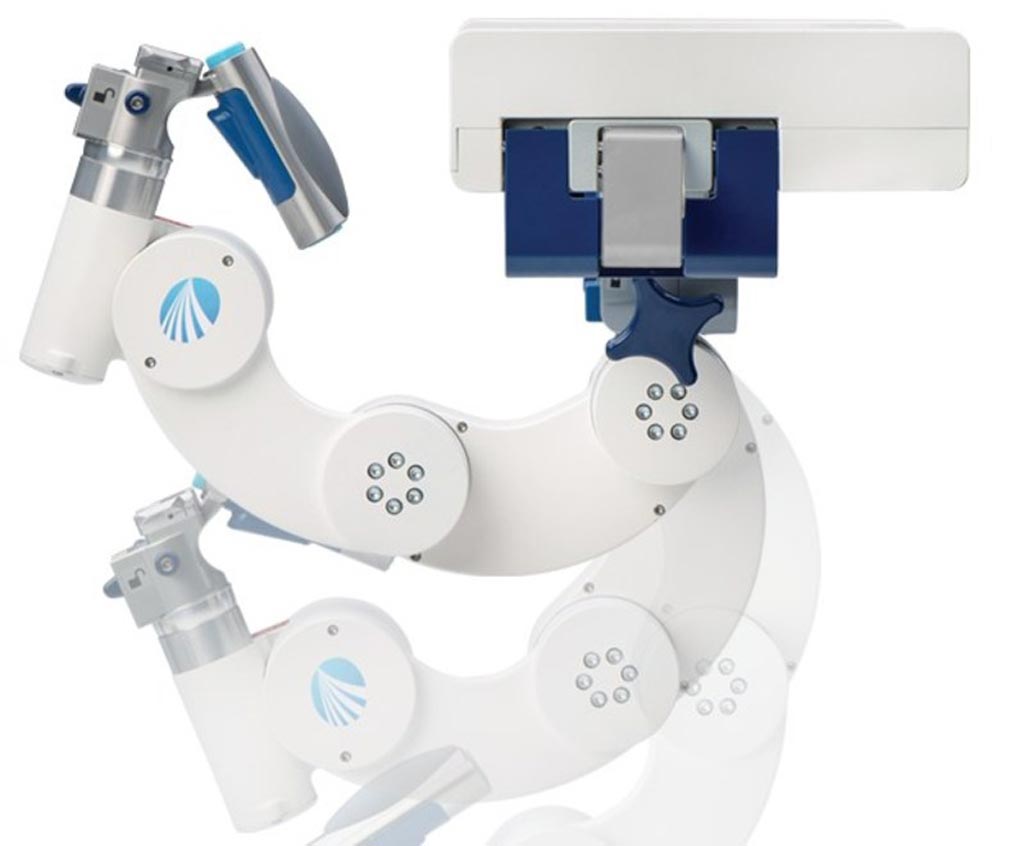Head Positioning System Promotes Precision Spine Procedures
By HospiMedica International staff writers
Posted on 14 Nov 2017
A novel head positioning system uses electro-mechanical technology to provide optimal operating conditions and site exposure.Posted on 14 Nov 2017
The Mizuho OSI (Union City, CA, USA) Levó Head Positioning System is based on an electromechanically designed arm module that provides fluid, controlled, motion with the aid of several key modules, including a QuickConnect system, which supports the efficient attachment of a skull clamp; detachable control handles for smooth intraoperative adjustments during a procedure, with discrete x- and y-axis controls that can be operated separately for more precise maneuverability.; and the QuickConnect Adapter, which allows users to quickly and safely connect the skull clamp to the Levó System during patient transfer.

Image: The new head positioning system is designed to facilitate spine procedures (Photo courtesy of Mizuho OSI).
Various modules and user interface touch points provide the surgical team control over intraoperative adjustments, without having to break scrub or disturb the sterile field, including for patient rotations. A range of interchangeable modules, such as the ProneView Helmet or the GentleTouch Pillow, assists the surgeons to obtain a neutral neck position. The portable system is also powered by an internal battery that lasts for several surgeries, and does not need to be connected to power during a procedure.
“In designing the Levó System, we wanted to offer surgeons a seamless and flexible solution that affords them better control over patient positioning during these delicate procedures,” said Greg Neukirch, vice president of Marketing and Sales at Mizuho OSI. “We're proud to unveil a solution we believe works to enhance clinicians' surgical experience, providing for safe and precise care when positioning a patient's head for all prone spine procedures.”
Patient positioning for surgery should provide surgical comfort and optimization of surgical exposure, while minimizing positioning-related risks and complications, such as pressure sores and peripheral nerve damage. Other complications related specifically to positioning in neurosurgical procedures include cerebral edema and bleeding, visual loss, quadriplegia, venous and paradoxical air embolism, pneumocephalus, and macroglossia.
Related Links:
Mizuho OSI














